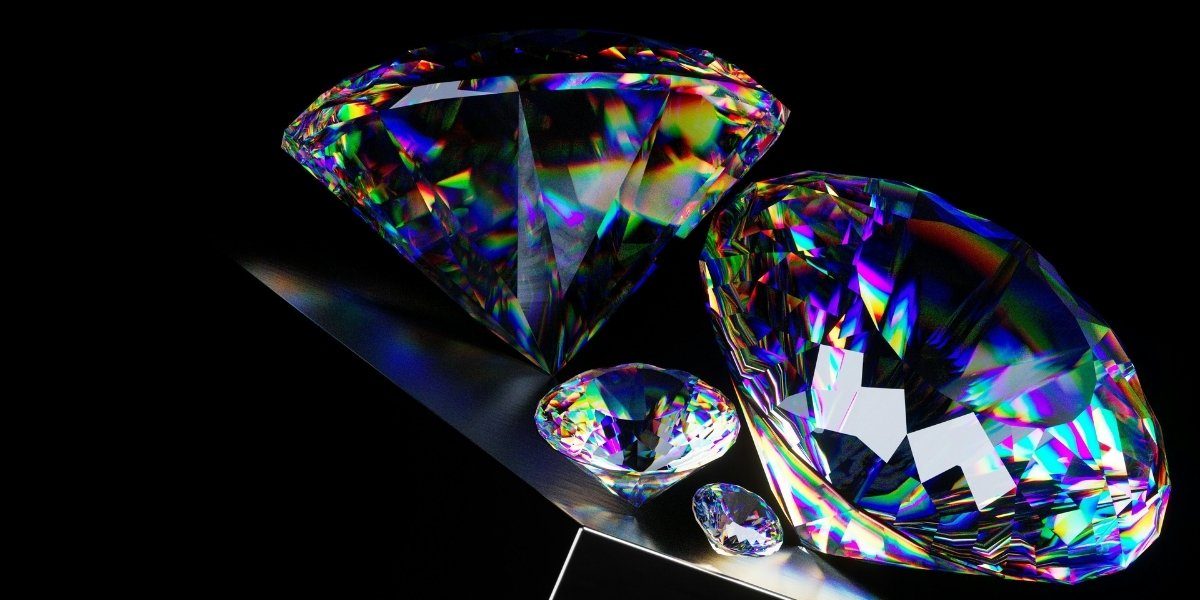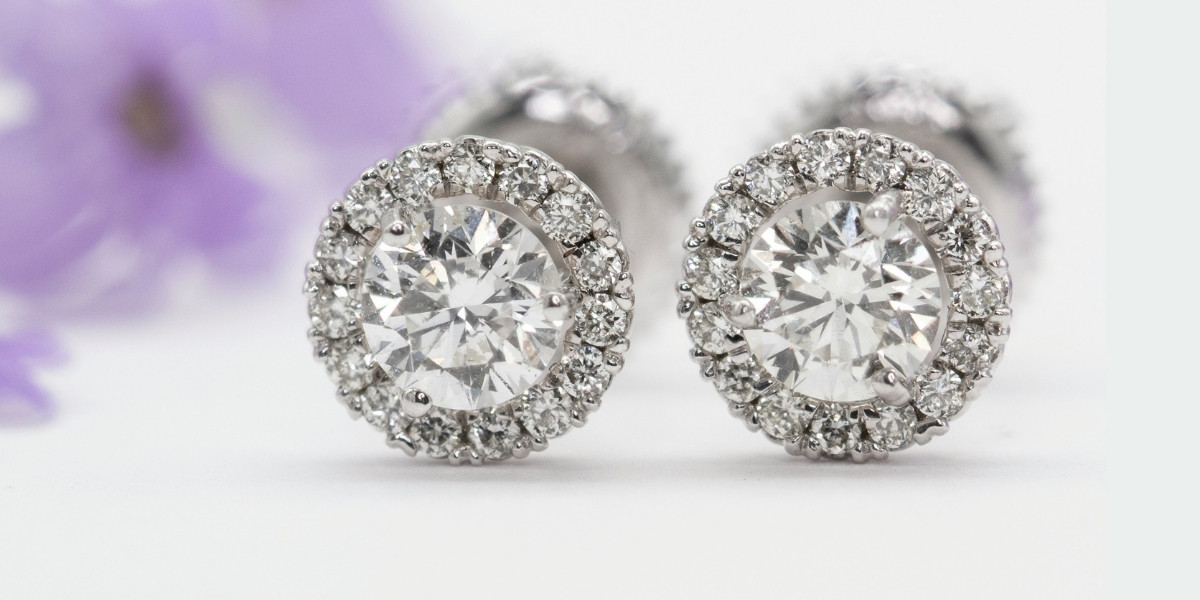Exploring How Lab-Grown Diamonds Present a Sustainable Alternative
Diamonds have long been a symbol of luxury, love, and beauty. However, the traditional diamond mining industry has faced significant ethical and environmental concerns, from human rights violations to the destruction of ecosystems. In response, lab-grown diamonds have emerged as a sustainable alternative, providing the same physical, chemical, and optical properties as mined diamonds, but with a potentially smaller ecological footprint and more transparent sourcing. This delves into the sustainability of lab-grown diamonds, exploring how they compare to mined diamonds and contribute to a more responsible jewelry industry.
Read Also: How to Choose the Right Dating App for Your Needs and Goals
The Environmental Impact of Traditional Diamond Mining
Diamond mining, particularly in remote and ecologically sensitive areas, has far-reaching environmental consequences. Some of the most significant impacts include:
-
Habitat Destruction: The extraction of diamonds often involves clearing vast areas of land, leading to deforestation, soil erosion, and the destruction of wildlife habitats. Ecosystems are disrupted, and plant and animal species are often displaced or endangered.
-
Water Pollution: The mining process involves large amounts of water used to separate diamonds from rock. This water can become polluted with chemicals, affecting nearby rivers, lakes, and groundwater supplies.
-
Carbon Emissions: The machinery used in diamond mining, including bulldozers, trucks, and dredgers, is energy-intensive and produces significant carbon emissions. In addition to the mining operations themselves, transporting diamonds across the globe further contributes to the carbon footprint of the industry.
These environmental issues, coupled with the often opaque practices surrounding the diamond mining supply chain, raise significant concerns for conscientious consumers.
Reduced Carbon Footprint
Lab-grown diamonds, produced using one of two methods—High Pressure High Temperature (HPHT) or Chemical Vapor Deposition (CVD)—offer a cleaner and more energy-efficient alternative to traditional diamond mining.
-
Energy Consumption: While the production of lab-grown diamonds requires energy, it generally uses significantly less energy than the mining, sorting, and transportation processes involved in traditional diamond extraction. Furthermore, as renewable energy sources become more integrated into manufacturing processes, lab-grown diamonds are poised to have an even smaller carbon footprint.
-
Carbon Emissions: The ability to create diamonds in a controlled laboratory environment means that manufacturers can optimize the process for energy efficiency and minimize emissions, making lab-grown diamonds a more sustainable option than mined diamonds.
The reduction in carbon emissions is especially important given the growing emphasis on reducing the jewelry industry’s environmental impact. Lab-grown diamonds offer a promising step toward more sustainable luxury.
Minimized Habitat Disruption
One of the most compelling reasons to choose lab-grown diamonds over mined diamonds is the absence of large-scale land excavation. Traditional mining operations require massive excavation of the earth, which involves deforestation, ecosystem disruption, and the displacement of wildlife.
In contrast, lab-grown diamonds are created in controlled environments, eliminating the need for land excavation, forest clearing, and the destruction of natural habitats. The process is much more compact and does not involve the environmental destruction that mining does.
This approach is beneficial not only for the environment but also for preserving biodiversity. By choosing lab-grown diamonds, consumers contribute to the conservation of natural ecosystems.
Water Conservation and Reduced Pollution
Water use is another area where the environmental impact of mining is starkly different from that of lab-grown diamonds.
-
Water Usage in Mining: Mining operations consume vast amounts of water, primarily to wash away dirt and separate diamonds from rock. This water often becomes contaminated with chemicals, which can then leach into nearby water bodies, affecting local ecosystems and the quality of drinking water.
-
Water Use in Lab-Grown Diamond Creation: On the other hand, lab-grown diamonds require significantly less water, and the processes used to produce them can be tightly controlled to minimize waste and pollution. Water in lab-grown diamond production is typically recycled, reducing the overall consumption and minimizing any potential harmful byproducts.
With growing concerns over water scarcity and the environmental impact of pollution, lab-grown diamonds offer a more sustainable solution in terms of water usage and conservation.
Ethical Sourcing and Transparency
The traditional diamond industry has long been associated with ethical issues, particularly concerning conflict diamonds. These diamonds, often referred to as “blood diamonds,” are mined in war zones and sold to fund violent conflicts. Furthermore, many mining operations rely on exploitative labor practices, including child labor and unsafe working conditions.
Lab-grown diamonds, however, offer a clear advantage in terms of ethical sourcing. Because they are created in a laboratory under controlled conditions, there is no risk of contributing to conflict or unethical labor practices. The process of producing lab-grown diamonds is fully traceable and transparent, giving consumers the confidence that they are purchasing a product that aligns with their values.
The availability of lab-grown diamonds allows consumers to choose a product that is both beautiful and ethically sourced, contributing to a more responsible and transparent jewelry industry.
Technological Advancements in Sustainable Production
The technology behind lab-grown diamonds has advanced significantly in recent years, with improvements in energy efficiency, production speed, and quality. Key innovations include:
-
Use of Renewable Energy: Many companies in the lab-grown diamond industry are adopting renewable energy sources, such as solar or wind power, to fuel production. This further reduces the environmental impact of diamond creation.
-
Closed-Loop Systems: Advances in closed-loop systems allow for the recycling of gases, water, and other resources used in diamond production. These systems reduce waste and ensure that materials are reused in the process, further minimizing the environmental footprint.
-
Growth Techniques: New techniques for growing diamonds more efficiently and with fewer resources are continually being developed. These advancements mean that lab-grown diamonds are not only becoming more affordable but also more sustainable.
The Future of Sustainable Luxury
As consumer demand for sustainable and ethically sourced products continues to rise, lab-grown diamonds are poised to play a significant role in the future of the jewelry industry. With their reduced environmental impact, ethical sourcing, and transparent supply chains, lab-grown diamonds offer a responsible alternative to mined diamonds, allowing consumers to indulge in luxury without compromising their values.
As more consumers seek products that align with their ethical standards, lab-grown diamonds are becoming an increasingly attractive choice for those looking for sustainable luxury. The growing awareness of the environmental and social consequences of diamond mining is likely to drive even greater demand for this more responsible option.
Read Also:
Exploring How Lab-Grown Diamonds Present a Sustainable Alternative
Diamonds have long been a symbol of luxury, love, and beauty. However, the traditional diamond mining industry has faced significant ethical and environmental concerns, from human rights violations to the destruction of ecosystems. In response, lab-grown diamonds have emerged as a sustainable alternative, providing the same physical, chemical, and optical properties as mined diamonds, but with a potentially smaller ecological footprint and more transparent sourcing. This pillar delves into the sustainability of lab-grown diamonds, exploring how they compare to mined diamonds and contribute to a more responsible jewelry industry.
The Environmental Impact of Traditional Diamond Mining
Diamond mining, particularly in remote and ecologically sensitive areas, has far-reaching environmental consequences. Some of the most significant impacts include:
-
Habitat Destruction: The extraction of diamonds often involves clearing vast areas of land, leading to deforestation, soil erosion, and the destruction of wildlife habitats. Ecosystems are disrupted, and plant and animal species are often displaced or endangered.
-
Water Pollution: The mining process involves large amounts of water used to separate diamonds from rock. This water can become polluted with chemicals, affecting nearby rivers, lakes, and groundwater supplies.
-
Carbon Emissions: The machinery used in diamond mining, including bulldozers, trucks, and dredgers, is energy-intensive and produces significant carbon emissions. In addition to the mining operations themselves, transporting diamonds across the globe further contributes to the carbon footprint of the industry.
These environmental issues, coupled with the often opaque practices surrounding the diamond mining supply chain, raise significant concerns for conscientious consumers.
Reduced Carbon Footprint
Lab-grown diamonds, produced using one of two methods—High Pressure High Temperature (HPHT) or Chemical Vapor Deposition (CVD)—offer a cleaner and more energy-efficient alternative to traditional diamond mining.
-
Energy Consumption: While the production of lab-grown diamonds requires energy, it generally uses significantly less energy than the mining, sorting, and transportation processes involved in traditional diamond extraction. Furthermore, as renewable energy sources become more integrated into manufacturing processes, lab-grown diamonds are poised to have an even smaller carbon footprint.
-
Carbon Emissions: The ability to create diamonds in a controlled laboratory environment means that manufacturers can optimize the process for energy efficiency and minimize emissions, making lab-grown diamonds a more sustainable option than mined diamonds.
The reduction in carbon emissions is especially important given the growing emphasis on reducing the jewelry industry’s environmental impact. Lab-grown diamonds offer a promising step toward more sustainable luxury.
Minimized Habitat Disruption
One of the most compelling reasons to choose lab-grown diamonds over mined diamonds is the absence of large-scale land excavation. Traditional mining operations require massive excavation of the earth, which involves deforestation, ecosystem disruption, and the displacement of wildlife.
In contrast, lab-grown diamonds are created in controlled environments, eliminating the need for land excavation, forest clearing, and the destruction of natural habitats. The process is much more compact and does not involve the environmental destruction that mining does.
This approach is beneficial not only for the environment but also for preserving biodiversity. By choosing lab-grown diamonds, consumers contribute to the conservation of natural ecosystems.
Water Conservation and Reduced Pollution
Water use is another area where the environmental impact of mining is starkly different from that of lab-grown diamonds.
-
Water Usage in Mining: Mining operations consume vast amounts of water, primarily to wash away dirt and separate diamonds from rock. This water often becomes contaminated with chemicals, which can then leach into nearby water bodies, affecting local ecosystems and the quality of drinking water.
-
Water Use in Lab-Grown Diamond Creation: On the other hand, lab-grown diamonds require significantly less water, and the processes used to produce them can be tightly controlled to minimize waste and pollution. Water in lab-grown diamond production is typically recycled, reducing the overall consumption and minimizing any potential harmful byproducts.
With growing concerns over water scarcity and the environmental impact of pollution, lab-grown diamonds offer a more sustainable solution in terms of water usage and conservation.
Ethical Sourcing and Transparency
The traditional diamond industry has long been associated with ethical issues, particularly concerning conflict diamonds. These diamonds, often referred to as “blood diamonds,” are mined in war zones and sold to fund violent conflicts. Furthermore, many mining operations rely on exploitative labor practices, including child labor and unsafe working conditions.
Lab-grown diamonds, however, offer a clear advantage in terms of ethical sourcing. Because they are created in a laboratory under controlled conditions, there is no risk of contributing to conflict or unethical labor practices. The process of producing lab-grown diamonds is fully traceable and transparent, giving consumers the confidence that they are purchasing a product that aligns with their values.
The availability of lab-grown diamonds allows consumers to choose a product that is both beautiful and ethically sourced, contributing to a more responsible and transparent jewelry industry.
Technological Advancements in Sustainable Production
The technology behind lab-grown diamonds has advanced significantly in recent years, with improvements in energy efficiency, production speed, and quality. Key innovations include:
-
Use of Renewable Energy: Many companies in the lab-grown diamond industry are adopting renewable energy sources, such as solar or wind power, to fuel production. This further reduces the environmental impact of diamond creation.
-
Closed-Loop Systems: Advances in closed-loop systems allow for the recycling of gases, water, and other resources used in diamond production. These systems reduce waste and ensure that materials are reused in the process, further minimizing the environmental footprint.
-
Growth Techniques: New techniques for growing diamonds more efficiently and with fewer resources are continually being developed. These advancements mean that lab-grown diamonds are not only becoming more affordable but also more sustainable.
The Future of Sustainable Luxury
As consumer demand for sustainable and ethically sourced products continues to rise, lab-grown diamonds are poised to play a significant role in the future of the jewelry industry. With their reduced environmental impact, ethical sourcing, and transparent supply chains, lab-grown diamonds offer a responsible alternative to mined diamonds, allowing consumers to indulge in luxury without compromising their values.
As more consumers seek products that align with their ethical standards, lab-grown diamonds are becoming an increasingly attractive choice for those looking for sustainable luxury. The growing awareness of the environmental and social consequences of diamond mining is likely to drive even greater demand for this more responsible option.
Lab-grown diamonds present an exciting and sustainable alternative to traditional diamond mining. By reducing environmental impacts such as habitat destruction, carbon emissions, and water pollution, lab-grown diamonds offer a responsible choice for consumers who care about the planet and its future. With advances in technology, a focus on ethical sourcing, and the growing demand for sustainable luxury, lab-grown diamonds are not just a passing trend—they are helping to redefine the future of the jewelry industry.
Read Also: Reshaping Perceptions: The Cultural and Ethical Landscape of Cosmetic Surgery
Lab-grown diamonds present an exciting and sustainable alternative to traditional diamond mining. By reducing environmental impacts such as habitat destruction, carbon emissions, and water pollution, lab-grown diamonds offer a responsible choice for consumers who care about the planet and its future. With advances in technology, a focus on ethical sourcing, and the growing demand for sustainable luxury, lab-grown diamonds are not just a passing trend—they are helping to redefine the future of the jewelry industry.








